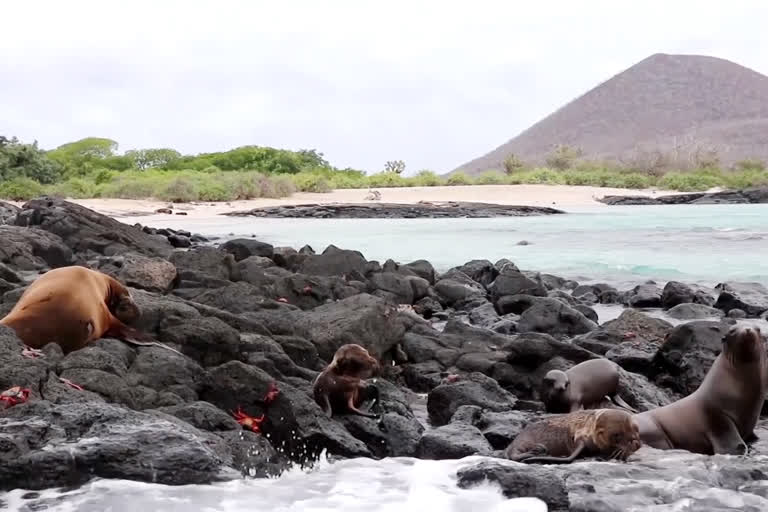Santa Cruz Island: Sea lions, iguanas and birds have reclaimed the Galapagos Islands. This may have been how Charles Darwin first saw the archipelago almost 200 years ago.
With no tourists in sight, the coronavirus lockdown has allowed researchers from the Ecuadorian government to study the impact of tourism on the island.
The research aims to evaluate the type and abundance of native, endemic and introduced species around 34 touristic zones on the archipelago.
Water quality, impact on the seafloor, state of soil erosion, vegetation cover and management indicators such as safety levels; and the state of infrastructure are all being studied.
When activities resume, new measurements will be taken to establish comparisons.
Read also: Arctic's melting glaciers reveal five new islands
The research being carried out is in collaboration with the Institute of Applied Ecology of the San Francisco de Quito University, the Galapagos Science Centre and the Charles Darwin Foundation.
In total, thirty-five park rangers are taking part.
Virtually trained on indicators and data collection, the rangers were also tested for coronavirus before they started work in the field.
Read also: Remote islands offer remote-control tourism
"This research is very important because it allows us to take management measures on the touristic places. We are evaluating significant indicators, such as the condition of the trails, erosion of the trails, presence of invasive species, state of infrastructure, water quality or some indicators that show us whether we should we pay attention," explains Danny Rueda Córdova, Ecosystems Director at the Galapagos National Park.
The Galapagos National Park is opening its activities gradually after 70 days of a strict lockdown, implemented to try to stop the spread of coronavirus.
Cordova explains there have been some interesting observations during field data collection.
''We've observed some interesting things, for example, a higher number of emblematic species on some beaches. We have also identified that species of sea birds, such as boobies, have made nests on the visiting trails. Since there are no visitors, the trails are free, and they have made their nesting sites on these spaces, which is interesting to observe,'' he says.
The lockdown in Ecuador started on March 17, and Galapagos stopped receiving touristic flights on the same date.
Galapagos Airports are open, but operations for tourist flights are still not authorised.
According to the Ecuador restriction system, Galapagos changed from red to yellow on May 27, which means they are gradually reopening the island.
Local government has issued a protocol for access to visiting sites in protected areas.
This protocol has already started with the reopening of places near populated ports, for local tourists.
Galapagos local authorities have reported 76 confirmed cases of coronavirus, and one death so far.
Ecuador has recorded 3,438 coronavirus deaths, but officials say there could be more who died without ever being officially diagnosed.
AP



